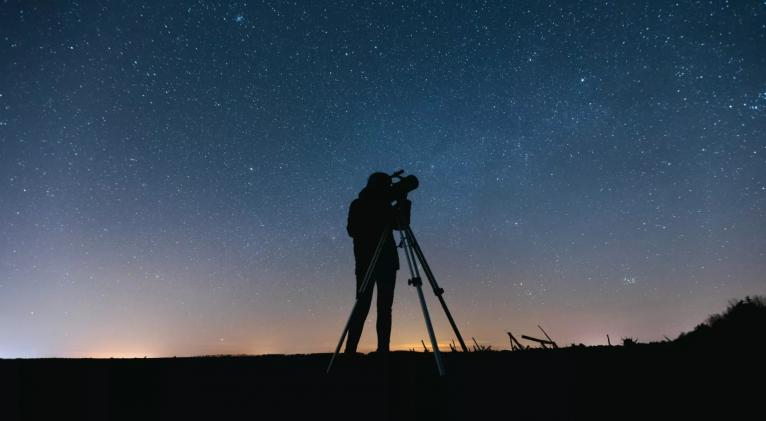
Six planets adorn the sky this month in what is known as a planetary parade, and most can be seen with the naked eye. You'll need to know what to look for to see it, though. Although you will need to know what to look for to see it.
These planetary alignments occur when several planets appear to align at once in the night sky. "They're not in a straight line, but they're close together on one side of the Sun," explains Hannah Sparkes, planetarium supervisor at the Bishop Museum of Science and Nature in Florida.
What is a planetary parade?
This astronomical union is fairly common and can happen at least every year, depending on the number of planets. A similar parade took place last June, but only two planets could be seen without any specialized equipment. So why do the planets align? There is an imaginary line that the Sun traces across the sky known as the ecliptic. It is based on the formation of the solar system, in which all the planets formed from the same plane of dust and gas. So the planets follow the same imaginary line, including Earth, meaning that when they appear in the sky, they roughly follow this ecliptic path.
There is an imaginary line that the Sun traces across the sky known as the ecliptic. It is based on the formation of the solar system, in which all the planets formed from the same plane of dust and gas.
Therefore, the planets follow the same imaginary line, including the Earth, which means that when they appear in the sky, they approximately follow this path of the ecliptic.
What can you see?
Venus, Mars, Jupiter, and Saturn are visible to the naked eye this month and part of February. Uranus and Neptune can be seen with binoculars and telescopes. During this last show, Mars shines especially because it is located directly in front of the Sun.
Sky watchers have also had the opportunity to see Venus and Saturn very close, just two degrees apart. A faint Mercury will join the parade as the seventh planet in late February, and the planets will slowly retreat throughout the spring.
What day is best to see the alignment?
Any clear night this month is ideal for viewing the planets. Kevin Williams, director of the Buffalo State University planetarium, explains that, to enjoy the show, you have to go outside a few hours after sunset and look south, if you are in the northern hemisphere or vice versa.
Venus and Saturn will shine in the southwest of the sky, Jupiter in the south, and Mars in the southeast or east. The planets will shine brighter than the stars, and Mars will appear as a reddish-orange dot. "It gives us a little bit of a clearer idea of our place in the solar system and the universe," Williams says.
January 21 is the best night to see the alignment, but any night this month, weather permitting and the sky is clear, is a good chance to see the parade.
After January 21, the Moon begins to wane and lose its brightness, and in February, although the planets are still visible, the increase in daylight hours can make it a little more difficult to get the best view of the parade.
What do I need to see the parade of planets?
You may want to download stargazing apps to help you know where to look, explains Sparkes. These can help you locate and identify the planets you see in the night sky, as well as other objects such as satellites and constellations.
We recommend a mobile app like Skytonight that will guide you through observing this alignment. Some planets require the use of telescopes or binoculars, as they are darker than the others, especially Neptune.
The next parade will be sooner than you expect and will be of 7 planets
On February 28, 2025, we will witness an extraordinary astronomical event. In the evening sky, just after sunset, we will be able to observe a unique spectacle: seven planets of our solar system will align in an exceptional formation.
Saturn, Mercury, Neptune, Venus, Uranus, Jupiter and Mars will create a beautiful celestial chain. Observers will be able to easily distinguish four of these planets with the naked eye: Mercury, Venus, Jupiter and Mars will shine clearly in the sky. To appreciate Uranus and Neptune, it will be necessary to use binoculars or a small telescope.
Saturn will represent the greatest challenge for observers. In order to be able to see it, it will be crucial to know the exact time according to your specific location, since its proximity to the Sun will make it difficult to see. (Text and Photo: Cubasí)